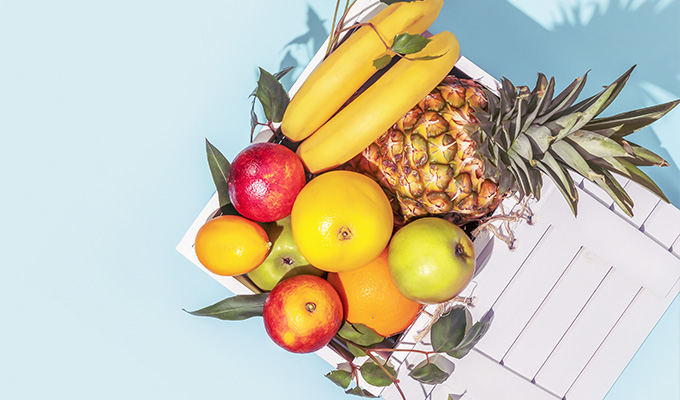So, we’ve just heard the news of yet ANOTHER upcoming price rise at our supermarkets. It’s getting more difficult to afford our weekly grocery shop and we have no idea when this will ease.
Here are my ten tips to keep that grocery bill down and cut costs on our supermarket shop.
1. Make a weekly meal plan
I am a BIG advocate for this. Realistically plan out your meals for the week, knowing when and how many people will be at home eating lunch/dinner. You don’t want to plan seven meals when you know you’ll be out for two of the nights and therefore the food sits wasting away in your fridge. Start with three of four if you’re new to meal planning. Meal planning means you can plan several meals that overlap with the same ingredients, so you’re keeping the cost down by stretching the ingredients further. Meal planning also limits the temptation to order expensive and unhealthy take away throughout the week.
2. Write a clear & concise shopping list
This one directly leads on from planning your meals. Check your fridge, freezer and pantry to make sure you’re not buying items you don’t need and write a list broken up into categories: meats, vegetables/fruits, dairy, bread, freezer and shelf items. If you write a clear and organised list, it makes it easier when you get to the supermarket. STICK to your list. Don’t be tempted to impulse buy or head down aisles that you don’t need to.

3. Shop seasonally
I know everyone bangs on about this, but it really does make a difference. Buying in season is usually cheaper as the produce requires less travel time, and therefore lower transport costs. Seasonal produce is also more likely to be cheaper because there is an abundance of it, so markets/supermarkets likely have excess that has a short shelf life. A bonus, the produce usually has better flavour when in season.
4. Frozen all the way
Frozen foods can often be much cheaper than their fresh counterparts.
Examples of frozen fruits: raspberries, blueberries, strawberries, bananas, mango, pineapple, blackberries, avocado, pomegranate arils, coconut.
Examples of frozen Vegetables: Peas, broccoli, stir fry blends, corn cobs, green beans, cauliflower/broccoli rice, carrots, brussels sprouts, edamame beans.
Frozen fruit and vegetables are fantastic!! And the variety in supermarkets is only getting better. They have excellent nutritional quality because they are snap frozen at their peak, it’s even been reported they hold more nutritional value than fresh produce. You also don’t have to worry about their shelf life – use them when you need.
5. Don’t be a brand snob on every product
I think we’re all guilty of reaching for the more expensive feta cheese or pasta sauce brand. Generic or home brand products are usually always produced in the same factory as the more expensive brand names, they just throw a different label on it. They are always a cheaper alternative, so good to swap out some of your usual items with the less expensive alternatives.

6. Shop Online
I understand that this may not be for everyone, but for certain products and weekly shops, it can be great. You’re able to view your total spend as you go, which means you’re more likely to shop mindfully and cut down on unnecessary items. Impulse buying isn’t a worry here. I really do see the value in online grocery shopping. A bonus, it cuts down the time of shopping significantly. Oh and I love it because I’m not frantically throwing things in the trolley because my Penelope is having a meltdown, winning!
7. Consider swapping meat for legumes, pulses or vegetarian options
Sorry to the meat lovers out there, which is also me, I love my meat. Unfortunately, meat is expensive and if you’re consuming it 7 nights a week, it can leave a big dint in your wallet. Aim for two meat free meals a week if you can. You can fill the meals with more veggies, canned beans, lentils, nut butters, eggs and nuts to ensure you get your protein intake.
8. When comparing prices, look at the unit price
A particular product might be on sale and seem cheaper, but it’s good to get a little familiar with the price per unit (eg. per 100g or 100ml). This is generally listed underneath on the price tag and will tell you how much volume/quantity you’re getting for the price. I use this all the time and it blows my mind reading the differences in some product pricing compared to exactly the same item next to it. Have a little look at nut price differences next time you’re at the shops, different brands can sell the same product for almost double the price!

9. Be careful with convenience foods/products
I’m talking grated cheese, pre-packaged coleslaws, pre-packaged spinach/rocket/kale, individual yoghurts, pre-chopped pumpkin/zucchini/sweet potato, pre-marinated meat, pre-crumbed meat. Yes, they may be more convenient, but they can often be far more expensive than buying the original or pre-cut versions and doing the chopping yourself at home.
10. Never shop when you are hungry.
This might sound ludicrous, but I am a massive culprit of overbuying and impulse buying if I go to the supermarket hungry. My crazy claim is also backed up by research suggesting that hunger creates an acquisitive mindset that encourages people to buy more than they need. And sadly, it usually includes convenience or junk foods. So please make sure you have a satisfied tummy before heading to the shops.
I really hope these ten tips can help you save those dollars at your next grocery shop. We are living in a crazy time at the moment, so it’s great to be a little more shop savvy where we can and keep those grocery bills to a minimum.

